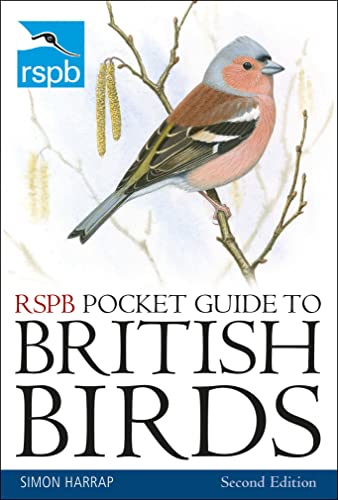In the UK, there are currently a whopping 574 species of birds. Some of these are rarer than others but it’s always worth keeping an eye out to see if you can spot something like a goshawk, a nightingale or the white tailed eagle which is largely only found in West Scotland and there’s thought to be only 100 mating pairs remaining!
But if you’d rather stay closer to home then your garden is the best place to spot some feathered friends. And while you could see almost anything, here’s our guide on the top 10 garden birds that may visit you in the UK.
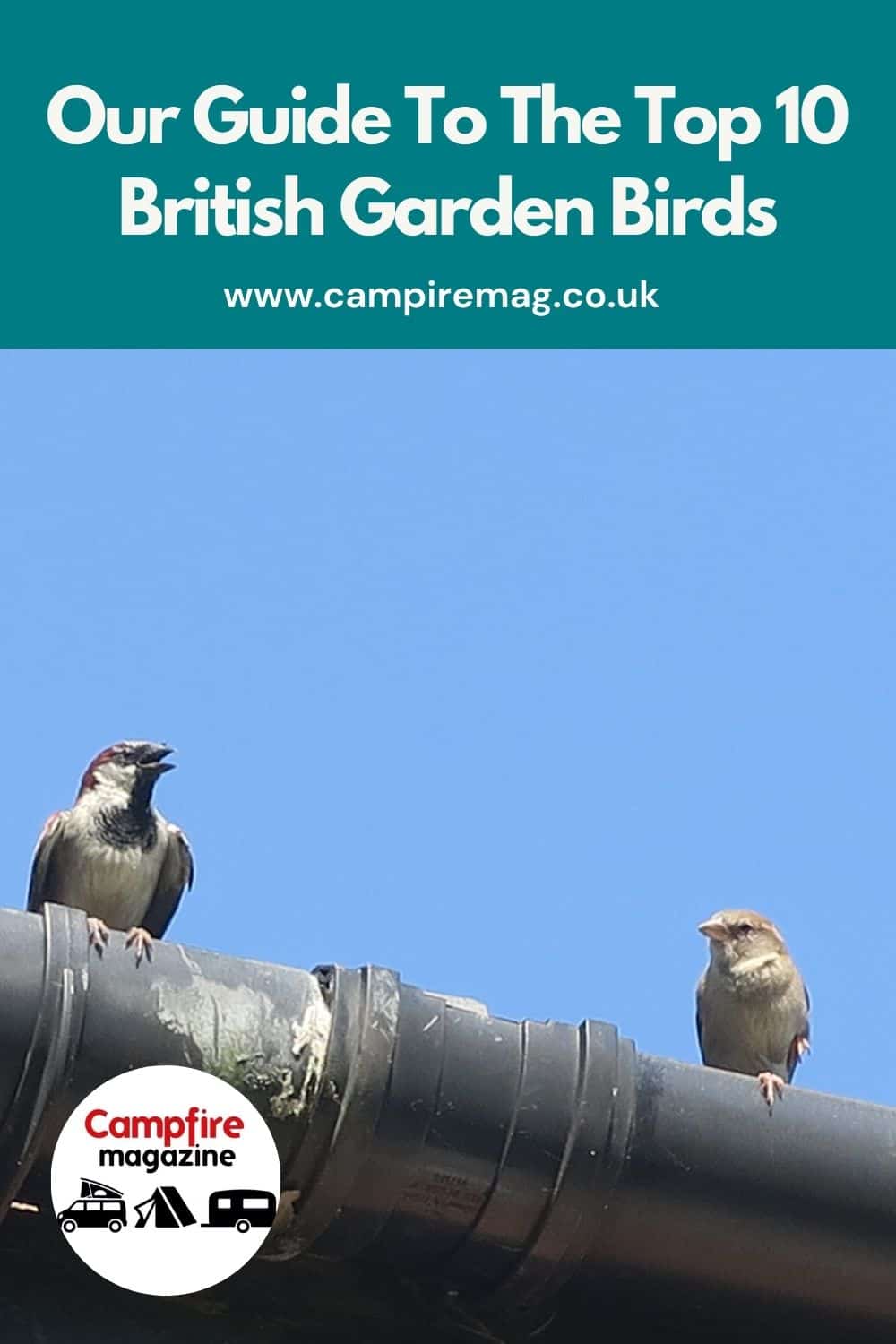

1. Blackbird
If you see a male blackbird then you’ll get what the name suggests; a beautiful glossy black bird with a bright yellowish-orange beak. However, if a female blackbird visits your garden, you might not recognise her so easily. This is because the females have different colourings and are usually brown with spotted markings on the breast.
According to the RSPB, there are currently more than five million breeding pairs of blackbirds in the UK, so you’re likely to see them every day. These birds can be spotted at any time of the year and are found across the country. The only place they tend to avoid is high up in the mountains.
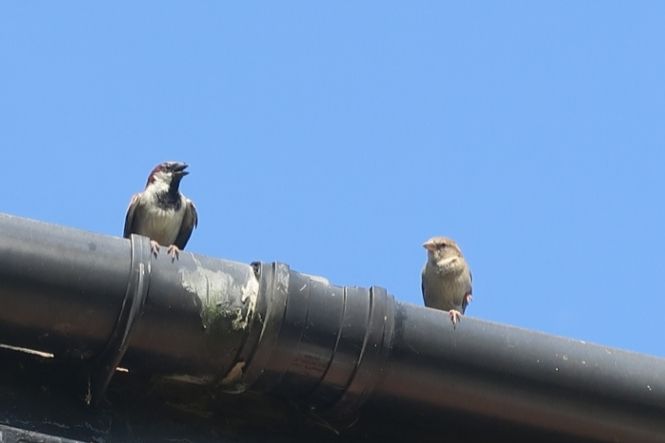
2. House Sparrow
The house sparrow is another bird that you’ll likely see on a daily basis in your garden. They’re smaller than the blackbird at just 14cm-15cm and are feisty little birds with a huge amount of character.
These feathered friends are widespread across the entire world and in the UK alone, there are currently around 5.3 million pairs. That said, this is nowhere near as many as there used to be and it’s thought that since 1971, the species has declined by as much as 71%!
The house sparrow is a noisy little bird that will fill your garden with its chirpy song. Both males and females have similar colouring with the male being slightly bolder and more striking.
HANDY LITTLE BOOK
If your looking to identify the birds as you see them this handy little book is great and fits into your pocket, giving you some good detail and great pictures you should be able to easily check what bird you just saw and with a handy map also of the uk stating where abouts these birds are usually spotted, here are a few photos from our copy.
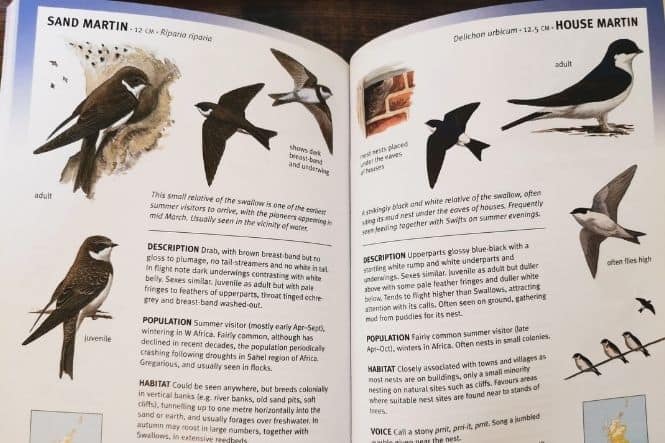

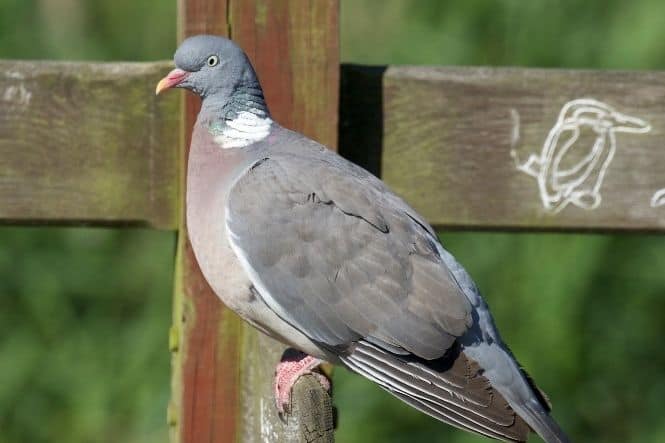
3. Wood Pigeon
Many people sadly see the wood pigeon as a pest as they’ll feed on crops and can be pretty wild in large groups. If you see them in towns and cities, you’ll notice how tame and friendly they are, wanting to get in on the action.
You can attract wood pigeons to your garden by planting things like peas and cabbages. They’re also partial to nuts and grains. Sunflowers are a huge draw for these birds and will brighten up your garden.
The wood pigeon can be distinguished by its grey feathers and a white patch around the neck. Some adults also have pinkish, greenish or blue markings particularly around the back of the neck and around the wings. Much like many of the other most common UK garden birds, the wood pigeon can be spotted at any time of the year.

4. Great Tit
There are several species of tit in the UK and the great tit is the largest of them all, as its name may suggest. These brightly coloured birds are truly one of the most striking visitors to your garden and will visit throughout the year. They’re found all over the country apart from the most northerly isles in Scotland.
The great tit has a deep black and bright white head with blue and yellow feathers across the body. They’re very easy to tell apart from other birds and are sprightly animals often known for their aggression towards other birds.
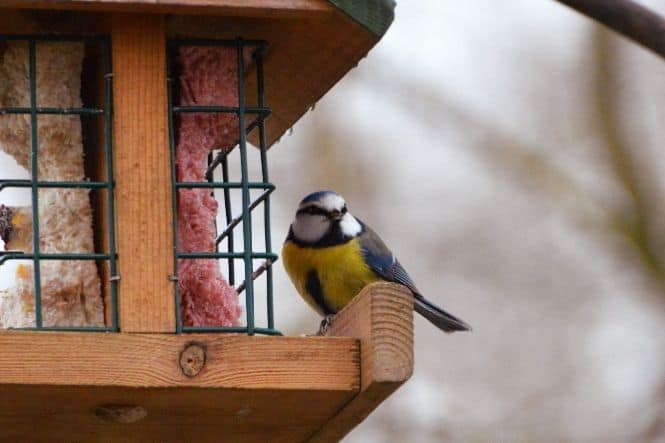
5. Blue Tit
Another of the most common species of tit in the UK is the blue tit with more than 3.6 million breeding pairs currently believed to live here. They have a somewhat similar appearance to their cousins, the great tit but have more white colouring on the face with blue, green and yellow feathers covering the body.
While you can spot a blue tit at any time of the year and in all areas of the UK, you’re more likely to see them in woodland areas and gardens. During winter, you may see flocks of the stunning little birds as they work together to gather food as the cold sets in.
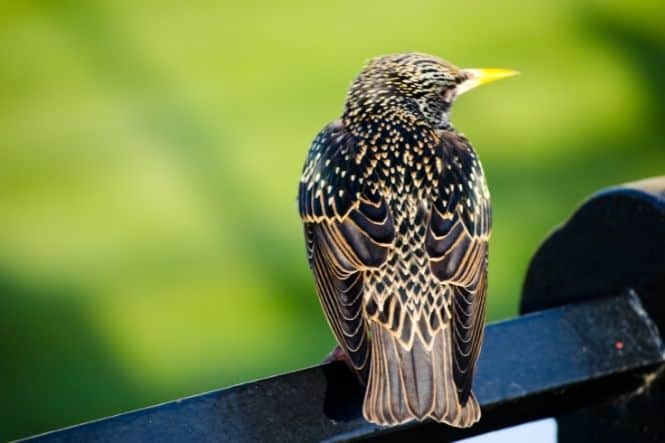
6. Starling
If looking at a starling from afar, you might mistakenly think you’re seeing a blackbird. That’s because, at a distance, these birds appear to be black. However, they’re not and instead have a speckled appearance featuring browns, purples and green hues.
This is one of the top ten birds you’ll see in a UK garden but it’s far less in number than some other species with just 1.8 million remaining in the country. For this reason, it’s considered a red list bird. You’ll see them more commonly in winter when they gather together but they can be spotted all year round. More starlings live in southern parts of the UK than up north and they’re pretty much non-existent in the Highlands.

7. Robin
One of the most easily recognisable birds in the country, if not worldwide is the robin. Not only is this a common garden bird but it’s also seen as a symbol to many people with a whole host of different meanings depending on where you come from. But for many, a robin is a sign that a loved one that has passed is trying to contact you or is a symbol of good luck and fortune.
With brown feathers and a striking red patch on the breast, you’ll probably think of Christmas when you see this bird. That said, robins don’t only appear in winter, you can see these birds throughout the entire year.
One thing that makes the robin so popular is that as far as wild birds go, they’re pretty friendly. Robins have been known to approach humans and show little fear around them. Why not try befriending a local robin; it would be a truly rewarding experience.

8. Goldfinch
If you want to spot a colourful bird in your garden then you might want to keep an eye out for the goldfinch. These birds have yellow patches on the wings and a bright red face; you certainly won’t miss them when they come to visit.
But one of the things that makes the goldfinch so well loved by wildlife lovers is its beautiful song. These birds twitter and sing so ornately and are well worth listening out for.
You’ll likely be able to see goldfinches all year round but in the winter, there may be less. Many of these birds will migrate to the continent for winter and head to places like Spain and Belgium.
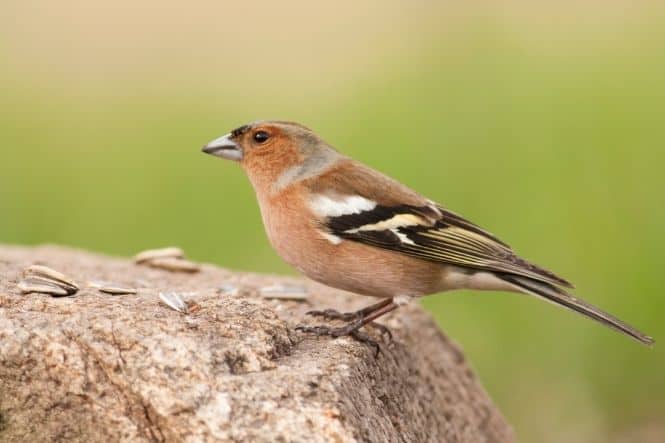
9. Chaffinch
It is thought that there are more than 6 million chaffinches in the UK making them one of the most common. You can tell them apart from other birds by their unique colours. These birds have white patches under the wings and a pinkish/reddish colour to the breast as well as black and brown areas on the body and wing.
The chaffinch likes to feed in privacy and safety so you’ll probably not see them on a feeder table. Instead, these birds can be found under hedges or even under the bird table so if you want to attract them to your garden, make sure that you have lots of safe spaces for them.
Look for the chaffinch at any time of the year and since there are so many of them, you won’t have trouble spotting one.

10. Magpie
One for sorrow, two for joy, three for a girl and four for a boy. Five for silver, six for gold, seven for a secret never to be told. If I said this rhyme to you, you’d automatically know which bird I was referring to and that’s likely because the magpie is so abundant in the UK. While there are less than other species, with an estimated 600,000 currently living here, you’ll still see them far and wide.
These are large birds that can grow up to 46cm with a wingspan up to 60cm. What’s fascinating is that these birds can live as long as 30 years and while they have something of a reputation, they’re actually very friendly and have been known to bond with humans.
If you’re looking for a magpie in your garden then you’re in luck as they’re hanging around at all times of the year. They’re found across the UK with the exception of the Scottish Highlands.
Bonus Bird - The Long Tailed Tit
The long tailed tit is not as common in the UK but it can be seen in gardens so we wanted to include it in this list as a bonus bird. The RSPB tells us that this is one of the top ten but with only 340,000 currently living in the UK, it’s not as prevalent as others.
The long tailed tit is relatively small at just 14cm but much of its length is made up of its tail; no guesses for where it gets its name! These are highly excitable birds that can often be found in large groups of up to about 20. Surprisingly, during the winter, the long tailed tit will even flock with other tit species.
They’re common throughout the year and eat a variety of insects and seeds. They have a loud and high pitched song that is unmistakable.

Attracting Birds To Your Garden
With so many beautiful avian species in the UK, we wouldn’t be surprised if you said that you wanted to attract more feathered friends to your garden. The good news is that it couldn’t be easier. It’s important to keep in mind that the time of year and where you are in the UK might affect what species turn up but you can guarantee that you’ll see at least some of the birds we have talked about in this guide.
So, without further ado, let’s take a look at some great tips for attracting birds to your garden.
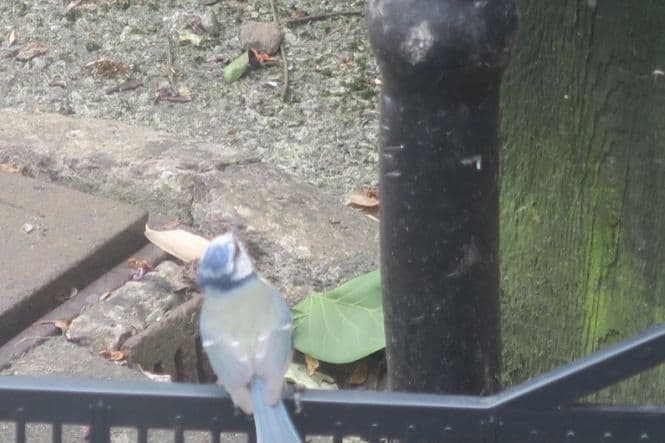
Bird Feeders
One of the easiest and most effective things you can do to attract birds to your garden is to set up some bird feeders. What foods you use will depend on the types of birds you are trying to attract but there are a lot of choices.
Generally speaking things like suet balls are great for attracting tit species and robins while mealworms are the food of choice for birds like starlings and blackbirds. If you want to see more sparrows and finches then sunflower hearts are an excellent choice of food.
Do keep in mind that different birds like different environments to feed. Some, like robins, will be happy to sit on a bird table while others like the chaffinch prefer to have shelter.
A Source Of Water
Birds not only enjoy chowing down on their favourite snacks, but they’ll also be more likely to approach your garden if there is a fresh source of water. They’ll use this for bathing and drinking so installing a bird bath is ideal.
You’ll need to choose a good location. This means selecting somewhere that the birds can have a good all round view to watch out for predators as well as being shaded. Also make sure that the water is not too deep; around two inches will be more than enough.
Plants
Birds love plants for many reasons. They’ll feed off of them and use them for shelter so by planting a lot of bird-friendly plants, you have a much higher chance of some feathered visitors.
Plants that grow berries such as hawthorn and holly are ideal as they will act as a natural food source for the birds. You might also consider planting something like honeysuckle or ivy as these provide the birds with an abundance of seeds. Just keep in mind that these can become invasive if they’re not kept under control.
Conclusion
So, there you have it; our definitive guide to the most common UK garden birds. Try going outside and seeing which of these you can spot. When you start paying attention to your local wildlife, you’ll be amazed at just how abundant it really is.

